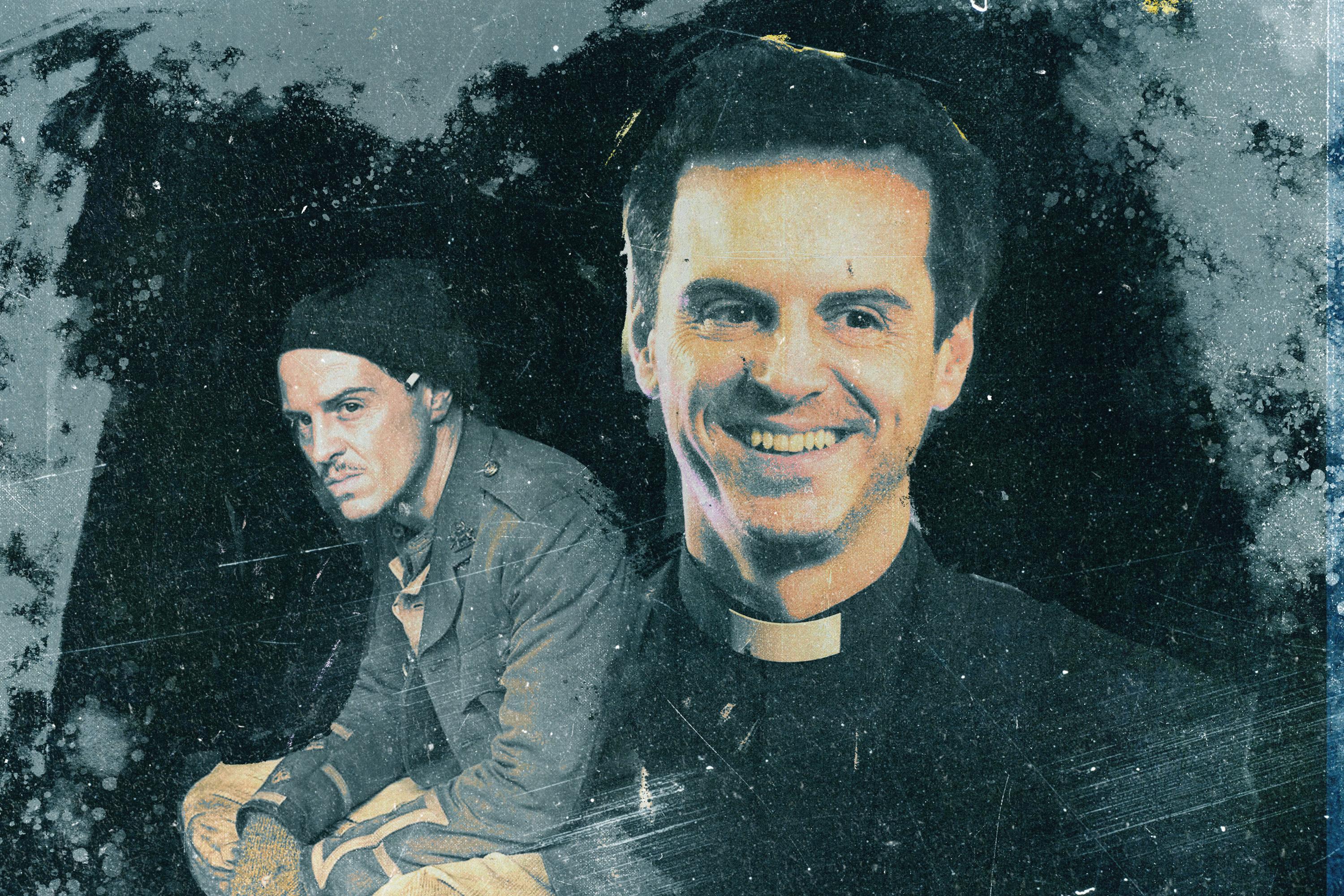
Being strongly identified with a single role is, infamously, a mixed blessing for an actor. On the one hand, the artist in you presumably recoils from the risk of getting typecast; on the other, it’s a notoriety-based business. For every BoJack Horseman poisoning himself on Glenlivet while the cockatoo on the next barstool squawks, “Aren’t you that guy from that thing?,” there’s another who can’t afford single malt because his career flatlined before anyone registered his existence. Harrison Ford likes to tell the story of the studio executive who told him he’d never be a star: “The first time Tony Curtis was ever in a movie,” the man said, “he delivered a bag of groceries. You took one look at him and knew he was a movie star.” Ford leaned across the suit’s desk, one gotcha finger upraised, and said, “I thought you were supposed to think that’s a grocery delivery boy.” It’s a nice anecdote if you value the actorly virtues of subtlety and naturalism; unrelatedly, the 77-year-old Ford will resume his starring duties in the Indiana Jones franchise for the fifth time in 40 years at a multiplex near you in 2021.
For most of 2019, you could type “Oh, Hot Priest is in this movie?” into any semi-literate group text, and no one would respond “Who is that?” (They would respond “I love him.”)
The point is, it’s a contradictory job. You want to be memorable but not limited by the things people remember you for. You want fame and artistry to work together, which they do until they don’t. As actorly overidentifications go, though, there are worse versions than the one Andrew Scott has experienced in the not-quite one year since the second season of Fleabag premiered last May. It’s not as if the 43-year-old Irish actor was unknown before then; he’d even already been branded by a single indelible character, Sherlock’s twitchy-eyed supervillain Jim Moriarty, whom he played from 2010 to 2017. More people probably watched Sherlock than watched Fleabag. But for a culturally decisive percentage of the latter show’s viewers—people who maybe recognized Scott from other stuff but didn’t know his name—he became the Hot Priest, even more than he’d been Moriarty, which is to say more than most actors are ever anything, at any time, in their whole careers. For most of 2019, you could type “Oh, Hot Priest is in this movie?” into any semi-literate group text, and no one would respond “Who is that?” (They would respond “I love him.”) The association was so deep that I felt a minor shock when I realized Phoebe Waller-Bridge’s screenplay had called the character just “the Priest.” In retrospect, it’s maybe the lone oversight in an otherwise flawless piece of writing.
As an actor, Scott excels at embodying a particularly intense set of contradictions—jittery, modern, balanced on the knife’s edge between cosmic hope and existential despair—and so, for him, the Hot Priest moniker seems less like a typecast-enabling career-killer and more like the external ripening of some weird inner truth. The term is so full of contradictions in its own right. There’s the head-fake oxymoron of “Hot Priest” itself, with its fusion of sexiness and holy chastity, optimism and looming scandal. There’s the whole “being extremely famous to people who don’t know your name” aspect. There’s also the whole “the character doesn’t even have a name, and therefore your fame is itself the result of being behind a double layer of anonymity” (which, wow). And then there’s the fact that being superidentified with one role doesn’t seem like it will limit Scott’s artistic choices—if anything just the opposite.
The Hot Priest is a character who represents some of the sanest virtues there are—wisdom, forgiveness, hope in the face of suffering—but he gets there only by making a dangerous leap into the irrational.
Consider Scott’s cameo in 1917, the Sam Mendes–directed WWI drama that debuted last month (and that’s already been nominated for Best Picture). Unlike many of my colleagues, I thought 1917 was an utterly half-assed movie—a cheap, lazy, self-satisfied story wrapped in a mid-shelf third-person shooter; like many Hollywood war films (but not the good ones) it craves the moral glamour of portraying the atrocities of combat but secretly loves warfare for the cool action and lavish set designs. Roger Deakins’s celebrated camera pans across a lot of corpses, but it does not make war look horrifying or viscerally inhuman. It makes war look like a cross between goth Instagram and a really beautiful graphic novel, which kills the whole theme.
Scott, though—oh my GOD, is he great in this movie. He’s in it for, what, maybe 80 seconds? But the expression on his face as he takes a long drag on a cigarette says more about what war does to human beings than the combined rest of the $100 million feature. His character, Lieutenant Leslie—it would be disrespectful to call him the Hot Lieutenant; I’m tempted to do so anyway—is the man ordered to show the two protagonists out of the trenches and into No Man’s Land. Brutal experience has made him certain that these two young men will die hideously as soon as they raise their heads above the trench line. The look Scott musters as he executes the order, a nerve-jangling mash of compassion (for the doomed boys), contempt (for the officers sending them to die, for himself for the role he’s playing in killing them), hopelessness (at the entire situation), anger (ditto), and desperate amusement (because what they are doing is so ruinously absurd, and yet they are doing it anyway)—this look tells a story deeper than the screenplay. It’s the look of someone for whom cynicism has become the last refuge of humaneness—the only thing allowing him to keep his sanity in a world where sanity itself might not make sense.
There may be no male actor working today who does better work on the line separating reason and a kind of everyday madness. It’s why, for instance, Scott’s Moriarty and his Lieutenant Leslie are able to share so many of the same mannerisms, the same fidgety discomfort in their skins, the same frayed energy, the same openmouthed glances to one side. They’re recognizably the products of one actor’s tool kit, but they’re also completely different human beings; it’s just that Leslie is narrowly clinging to a coherent personality from one side and Moriarty is narrowly clinging to an incoherent personality from the other. The Hot Priest is a character who represents some of the sanest virtues there are—wisdom, forgiveness, hope in the face of suffering—but he gets there only by making a dangerous leap into the irrational. Fleabag depicts religious faith as a conscious choice to be a little crazy, not in the sense of mental illness but in the sense of the rejection of evidence and logic. The wisdom Scott embodies as the Priest isn’t fixed or stable or even calm, but rather nervous, fragile, and in flux. Alive, in other words, but not quite reasonable. And it’s this uncertainty that makes the risks he and Fleabag take together, and don’t take together, so moving.
I’m aware, in writing this, that I’ve been throwing around adjectives that apply to, shall we say, a heavily mortgaged French chateau’s worth of other eccentric white male stars. Johnny Depp is jittery. Nicolas Cage is jangly. Robert Downey Jr. sort of flits his eyes around and talks really fast. Scott’s old Sherlock comrade Benedict Cumberbatch—though he turned out to be kind of a dull actor, didn’t he?—is still named “Benedict Cumberbatch,” which makes him seem (doctor!) stranger than he is. Scott isn’t a movie star on the level of these others. But I can say about him what I can’t say for any of them, which is that I’ve never seen an Andrew Scott performance that either bored me or struck me as a collection of tics. Every character he’s played, even the cartoon supergeniuses, even the nobodies who pop up on screen just long enough to say a few lines, has struck me, within the limits of their genres, as a fully realized human being. Every character he plays shows you something worth knowing about people, which is as useful a definition of good acting as I can think of. Maybe it’s time to retire Hot Priest and remember his name? Or maybe it doesn’t matter. Whatever we call him, he’s brilliant.

